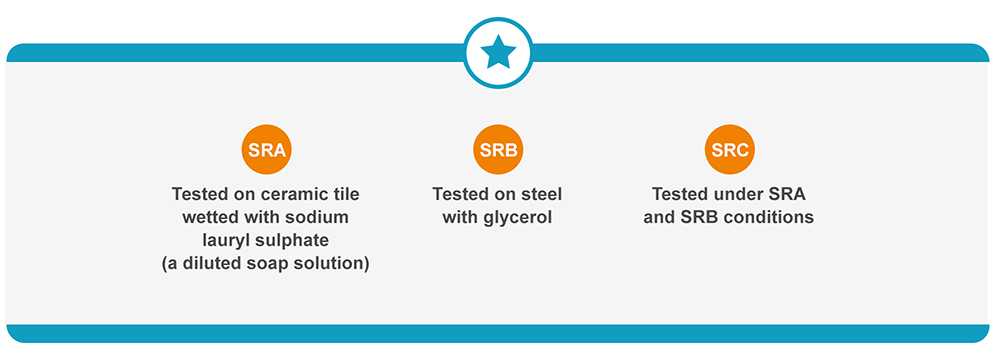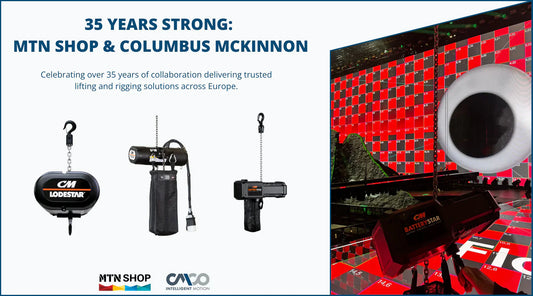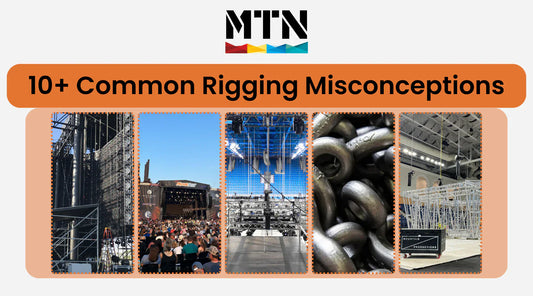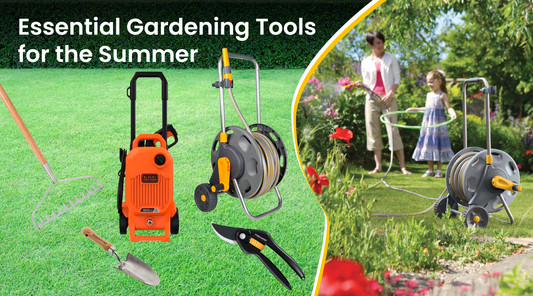Safety Boot Ratings Explained
Article
This guide set out in plain English explains all of the footwear safety codes and classifications that you need to know before making a purchase. Look no further. Let's start with this easy-to-understand table according to the EN ISO 20345:2011 standard:
| EN ISO 20345:2011 | SB | S1 | S2 | S3 | S4 | S5 |
| Basic Protection: (Toe protection, Slip resistance, Outsole strength, Upper tensile Strength etc) |
✓ | ✓ | ✓ | ✓ | ✓ | ✓ |
| Antistatic properties | ✓ | ✓ | ✓ | ✓ | ✓ | |
| Resistance to fuel oil | ✓ | ✓ | ✓ | ✓ | ✓ | |
| Energy absorption of seat region (in heel) | ✓ | ✓ | ✓ | ✓ | ✓ | |
| Closed seat region (fully enclosed heel) | ✓ | ✓ | ✓ | ✓ | ✓ | |
| Water penetration & absorption prevention | ✓ | ✓ | ||||
| Midsole penetration resistance | ✓ | ✓ | ||||
| Cleated Outsole | ✓ | ✓ | ||||
| Waterproofness & leakproofness | ✓ | ✓ |
Safety Boot Ratings Tested to EN ISO 20345:2011
S B Safety Boots
SB means ''Safety Basic'' - the basic safety standard for footwear. As learned from the table, these have basic toe protection against a 200-joule impact and a compression load of 15 kN.
They may also have additional safety features which will be shown via other symbols. For example, if you see SB-P this means that the footwear also has the additional feature of Penetration Resistance of the Midsole.
S 1 Safety Boots
If you work indoors with no risk of water sprays, and you need protection for your toes, then you will need S1 safety footwear featuring the following levels of protection.
- Basic toe protection: Against a 200-joule impact & 15kN compression force
- Antistatic protection: Prevent electrostatic build-up and ensure it is discharged effectively. This is essential to eliminate the risk of electric shock from electrical equipment or live parts as well as that posed by sparks igniting flammable substances or vapours.
- Resistance to fuel oil
- Energy absorption in the heel: Prevent injuries that occur through impact loading to the foot in daily activities such as jumping, running or and even walking.
-
Fully-enclosed heel: The seat region (heel) is enclosed meaning no holes other than to form seams.
(P.S. Other symbols can be added, such as S1-P)
S 2 Safety Boots
You will want S2 safety boots or shoes if you plan to work outdoors and need toe protection and water penetration resistance. Check the features of S2 footwear:
- Basic toe protection
- Antistatic protection
- Resistance to fuel oil
- Energy absorption in the heel
- Fully-enclosed heel
- Water penetration & absorption prevention ➜ An extra one on top of the features offered by S1
S 3 Safety Boots
S3 safety boots/shoes encompass all the same levels of protection as S2's, ideal for those who work outdoors and need protection for their toes, and against perforation and water absorption. Its features include:
- Basic toe protection
- Antistatic protection
- Resistance to fuel oil
- Energy absorption in the heel
- Fully-enclosed heel
- Water penetration & absorption prevention
- Midsole penetration resistance ➜ An extra one on top of the features offered by S2
- Cleated Outsole ➜ An extra one on top of the features offered by S2
S 4 Safety Boots
S4 footwear has all the protection offered by S1 but also with an entirely moulded polymer/rubber upper such as Dunlop Boots.
- Basic toe protection
- Antistatic protection
- Resistance to fuel oil
- Energy absorption in the heel
- Fully-enclosed heel
- Waterproofness and leakproofness thanks to the upper materials➜ An extra one on top of the features offered by S1
S 5 Safety Boots
Similar to S4 boots, S5 rating is a safety class specifically for all-rubber or all-polymeric footwear. Besides having all the same features of S4's, this class has two added benefits - midsole penetration resistance and cleated outsole.
- Basic toe protection
- Antistatic protection
- Resistance to fuel oil
- Energy absorption in the heel
- Fully-enclosed heel
- Waterproofness and leakproofness thanks to the upper materials
- Midsole penetration resistance ➜ An extra one on top of the features offered by S4
- Cleated Outsole ➜ An extra one on top of the features offered by S4
To learn more, head over to our safety footwear complete guide that illustrates more examples of each class for safety boots and shoes.
Slip Resistance Classes
Next is to choose the level of slip resistance.
It is tempting to choose the highest level of slip resistance for your footwear. Some work, however, may have a lower risk of falls/trips, meaning you may only need a pair of basic anti-slip shoes and shoes with maximum slip resistance may reduce your effectiveness.
There are shoes out there described as ‘slip resistant’ or ‘improved grip performance’ that have not been formally tested. You can be 100% sure the safety footwear is slip resistant when you identify a slip resistant rating SRA, SRB or SRC:

| SRA slip resistant soles | Tested on a ceramic tile wetted with dilute soap solution. |
| SRB slip resistant soles | Tested on smooth steel with glycerol. |
| SRC slip resistant soles | Offer the highest slip resistance protection as they pass both SRA and SRB slip resistance tests. |
Other Abbreviations
As mentioned, besides only displaying a safety boot rating such as SB and S1, additional safety features can be shown via letters. For example, our Dunlop Purofort Thermo + Full Safety Boots are S5 CI CR rated, meaning the boot features addition benefits which are insulation against cold and cut-resistant upper.
Here’s a list of abbreviations that are commonly used.
| P: Midsole Penetration Protection (Resist penetration force of 1100N) | WR: Water Resistance |
| C: Conductive | M: Metatarsal Protection |
| A: Antistatic Protection | AN: Ankle Protection |
| I: Electricity Insulating Footwear | CR: Cut Resistant Upper |
| E: Energy Absorption in the heel region | WRU: Water Resistant Upper |
| HI: Insulation Against Heat (Tested for 30 minutes at 150°C) | HRO: Heat Resistant Outsole (Resist 300°C for 60 seconds) |
| CI: Insulation Against Cold (Tested for 30 minutes at -20°C) | FO: Fuel Oil-Resistant Outsole |
Frequently Asked Questions
What is the difference between S1 and S3 safety boots?
They both offer basic footwear protection, antistatic protection, resistance to fuel oil, energy absorption in the heel. However S3 safety boots additionally offer water penetration & absorption resistance, penetration resistance and cleated outsole.
What is 200 joule toe protection?
It means your safety footwear can withstand an impact of 20kg in weight falling on to the toes from a height of 10.2 metres.
Are composite toe caps as safe as steel?
Like steel toe footwear, boots with a composite toe cap also meet the EN safety regulation basic requirements of a 200-joule protective toe cap. Also, composite toe caps are usually lighter than steel boots and are completely metal free and therefore do not conduct electricity.
Why wear safety boots or shoes?
Hazardous work environment vary in nature from greasy or wet floors to random gravel stained paths. In such a case, the stress of protection falls on the head of the workforce trudging round the clock to meet deadlines, project expectations and sustain company aim. That is where safety shoes come in play.
RON ROSE
Ron Rose is an owner of MTN SHOP & Mountain Productions and serves as the Global Managing Director. As MD, he has helped thousands of businesses to get their job done safely and effectively by offering useful and practical onsite safety knowledge.



